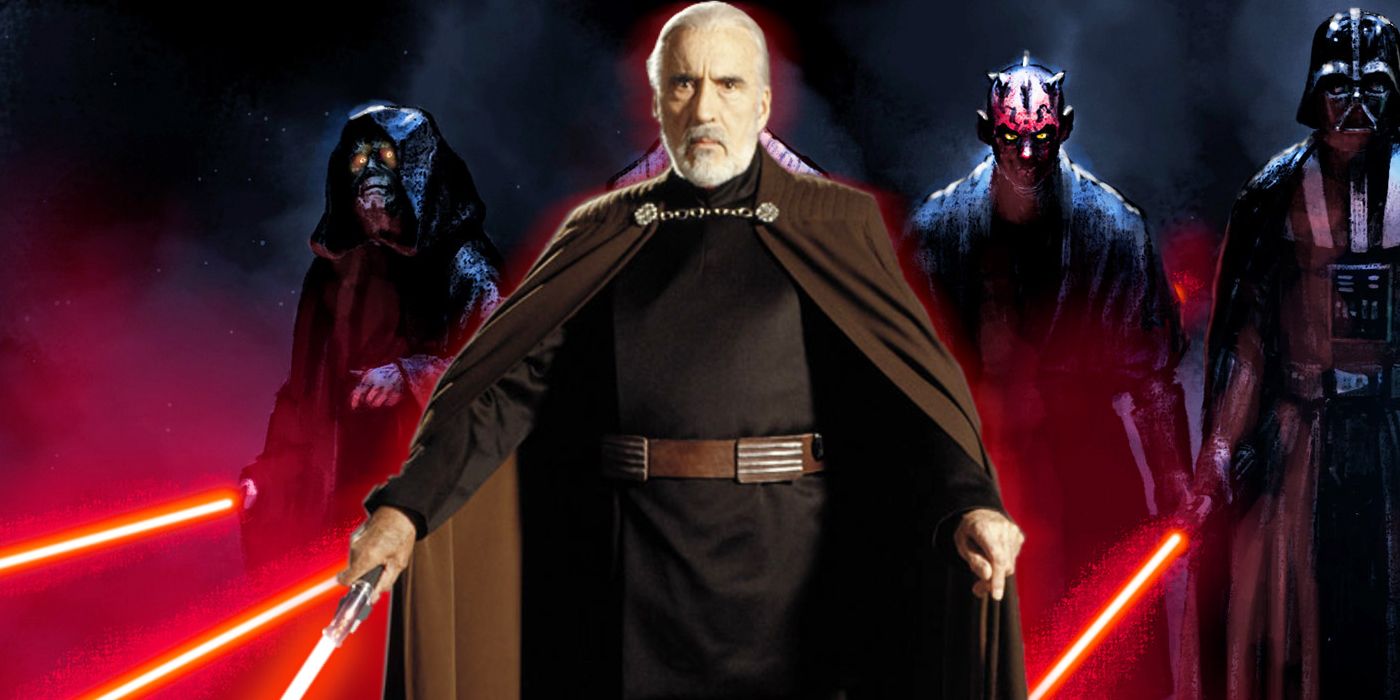
In Star Wars, there are countless warriors and many lightsaber users. However, no other duelists reached the level of skill that Count Dooku had when it came to one-on-one combat. While one of the oldest Sith seen in the franchise, the Dark Lord was also one of the most skilled combatants that the Jedi ever faced, seconded to fighters like the Emperor. Dooku's skill was even passed down to his apprentice, Asajj Ventress, who made the style her own and wielded two blades. But while powerful, Dooku's saber form had one major flaw that would lead to his demise.
The form Dooku mastered is Form II, also known as Makashi. It was one of the earliest forms established and even predates the creation of blasters. It was designed to face off against other skilled saber users and focused most on combating every form that existed at the time. It has remained one of the most elegant forms in combat, and its regality fits perfectly with Dooku.

Much like his master, Count Dooku was a master at his specific saber form. Where most practitioners face off against one opponent, Dooku was able to combat two Jedi at once in Attack of the Clones and came out the victor. This was mainly because of the philosophies that the form taught. Rather than emphasizing power and frantic movements, Makashi promoted economy of motion. Its ready stance was formal and had the saber facing downward to the opponent, hence why Dooku uses a curved hilt.
The style focused on speed and precision and was more so for people who only wanted to strike once and strike true. The backbone of the style, which allowed for such swift and precise attacks, was the form's reliance on parrying. Through learning to parry with a saber, a combatant would have the chance to land a decisive strike. That is why Dooku is often seen waiting for a strike and using an opponent's momentum and power against them.
However, as blasters became standard in the galaxy, lightsabers had to adapt to combat them. This meant that Makashi would no longer be the premiere saber form. The style also never adapted for blaster deflection and is one of the weaker points of the form. Future forms would focus more on defense, such as Obi-Wan's Soresu form, or use erratic movements to confuse the opponent like Mace Windu's Vapaad form.

But the form's biggest flaw was shown when Anakin and Dooku fought to save Palpatine in Revenge of the Sith. Anakin, now a skilled fighter, used his power and aggressive fighting style to overpower Dooku and relieve him of his hands. Because of the formality that came with Makashi, there was no accounting for physical power and aggression in combat. Therefore, there was no counter created.
Makashi, in a way, requires the user to have the upper hand in a battle and to control the pace of a fight. However, when power and rage are added to the mix, the form crumbles because it loses the upper hand to an unorthodox means of combat. Dooku was still an amazing duelist, but the only thing that his style couldn't account for was the evolution of saber forms.
0 Comments